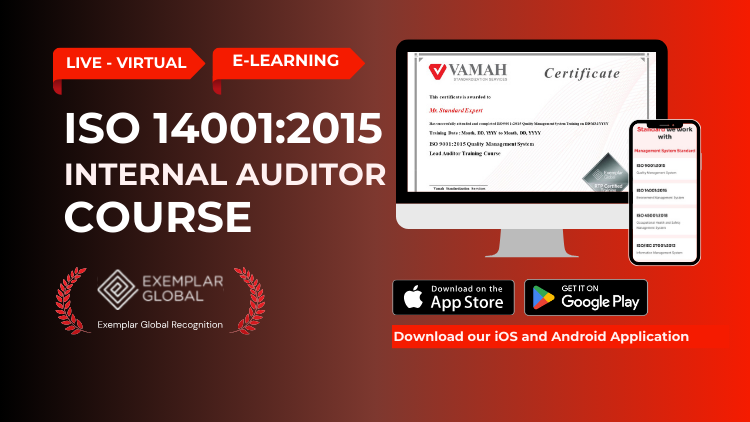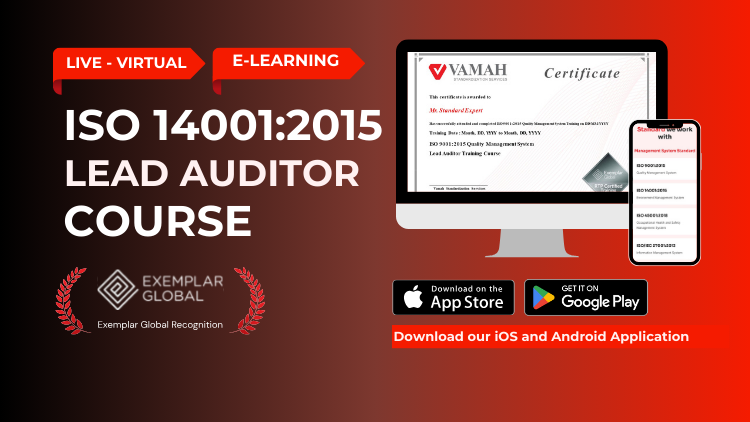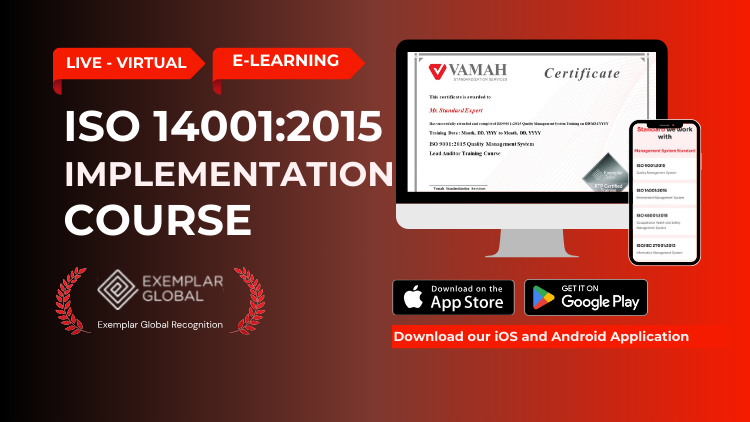ISO 14001:2015
ISO 14001:2015 is a globally recognized standard that defines the requirements for an Environmental Management System (EMS). It helps organizations ensure that their environmental performance consistently meets stakeholder expectations and regulatory requirements. This guide provides a comprehensive overview of ISO 14001, its importance, implementation process, and business impact.
Trainings
Our trainings are developed for ISO 14001:2015 with various level such as Awareness, Internal Auditor, Lead Auditor and Implementation.
ISO 14001:2015 Awareness Training
Our Awareness Training introduces participants to the fundamental concepts of ISO 14001. This course covers the importance of environmental management, key principles of the ISO 14001:2015 standard, and the benefits of implementing an Environmental Management System (EMS). It is ideal for employees at all levels who need a basic understanding of ISO 14001.

ISO 14001:2015 Internal Auditor Training

ISO 14001:2015 Lead Auditor Training

ISO 14001:2015 Implementation Training

DIY Templates
- Cost-Effective: Save on consultancy fees.
- Time-Saving: Ready-made documents for quick implementation.
- Comprehensive: Includes all necessary documents.
- Customizable: Easily adapt to your organization’s needs.
- Sustainable Practices: Promote continuous improvement and long-term ISO compliance.
- Streamlined Process: Clear instructions reduce the learning curve for team members.
Implement ISO 14001:2015 with DIY Templates
Our pre-prepared document kit, including environmental manuals, procedures, work instructions, forms, and policies, helps you achieve ISO 14001:2015 certification efficiently and cost-effectively. These resources are designed to meet regulatory requirements, enhance efficiency, and promote continuous improvement.
ISO 14001:2015 Consultancy
At VamahSS, we assist organizations in navigating the complexities of ISO standards implementation, certification, and continual improvement. Recognizing that every organization is unique, we provide tailored solutions to fit specific needs, making us your trusted partner in achieving ISO certification. Whether starting your ISO journey or optimizing existing processes, our consultancy services are designed to meet your objectives. We offer remote ISO consultancy services for various management system standards and accreditation standards. Choose between our two consulting options: online workshops or full project support tailored to your requirements. Contact us today to start your path to ISO certification.
Contact Us
Environmental Management System
ISO 14001:2015 is a globally recognized standard that defines the requirements for an Environmental Management System (EMS). This guide provides a comprehensive overview of ISO 14001, its importance, implementation process, and business impact.
-1.png?width=808&height=197&name=vamah(1)-1.png)